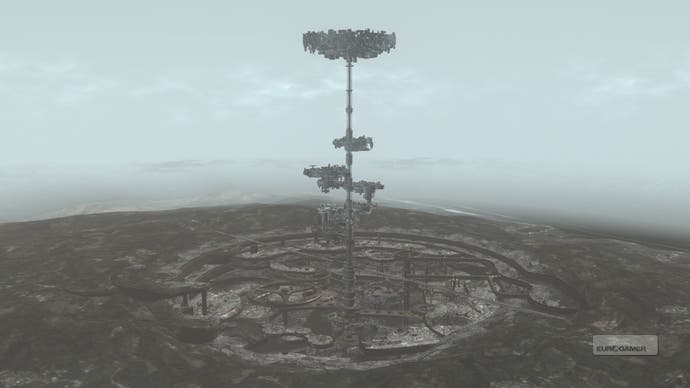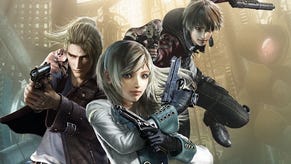Resonance of Fate
East meets West.
It's about time tri-Ace had another hit. The studio scored a big fat 9/10 with Valkyrie Profile 2 but that was nearly two years ago. Neither Infinite Undiscovery nor Star Ocean: The Last Hope impressed our reviewers, despite the fact one of them was Simon Parkin - a man who likes JRPGs so much the first dance at his wedding will be Aeris' death music.
Now tri-Ace is changing tack and changing publishers. Sayonara, Square Enix; to be this good takes SEGA, or so the studio reckons these days. According to producer Jun Yoshino, the decision to switch wasn't made for purely financial reasons.
"Because tri-Ace has worked on a lot of RPGs over the years they wanted something fresh to work with," he says, speaking at a SEGA press event in London. "Also when they began this project they didn't just want to limit themselves to the Japanese market. They were looking for a different angle of approach."
In other words, tri-Ace wanted to ensure Resonance of Fate would appeal to audiences around the world - and felt that SEGA could help make this happen. "We have really long discussions as to what a Western audience would look for in an RPG game," says Yoshino.
"Obviously we still need to keep it very Japanese, but [SEGA and tri-Ace] sat down and went through a lot of things which a Western audience find frustrating. We tried to get rid of as much as we could of that without losing the feel of a JPRG. We're pretty confident we've done as much as we can to keep that balance between the two styles."

At first glance Resonance of Fate certainly looks like a JRPG. It's set in "neither the future nor the past", according to Yoshino; "It's got a modern-day feel to it but there are still fantasy and sci-fi elements." The emphasis is definitely on steampunk rather than dungeons and dragons.
The gameworld has an industrial, mechanical look, and is painted with a palette of steel greys and rusty browns. Characters run along corroded walkways, past brick walls and underneath iron girders as neon signs flash in the background. Everywhere you look there are spinning cogs and clicking gears, which Yoshino explains are part of a huge, clock-like machine that runs the world. The machine was originally designed to clear pollution from the air but a community has since sprung up and built a tower around it.
The higher up the tower you go, the higher the society you'll find there. Right at the top are the two most powerful members of the population, the only two who are aware the machine is running the whole show. Then come the elite, further down are the working class and right at the bottom are the slums, complete with scary monsters.

To demonstrate how it all works Yoshino switches from the game environment to the world map. Instead of being top-down, the view is side-on; you can see each layer of the world and how it's positioned around the central tower. Each layer is comprised of different-coloured hexagons. Grey hexagons denote areas of the map which have yet to be unlocked. To open them up, you must collect white hexagonal map fragments from enemies you have defeated. You can then slot them in on the world map and unlock new areas in whatever order you please.
Other hexagons are brightly coloured and can only be unlocked with map fragments of the right colour and shape. These are harder to find, and can usually only be obtained by defeating bosses or completing critical missions.
Yoshino takes us back to the regular gameworld now and introduces us to the game's three playable characters - a girl called Reanbell, a man in tight jeans called Zephyr and their leader, Vashyron. They are all mercenaries or, to give them their official title, Hunters. "They take on missions given to them by the aristocracy or upper class, like delivering packages," says Yoshino. Sort of like steampunk Ocado van drivers, then.



